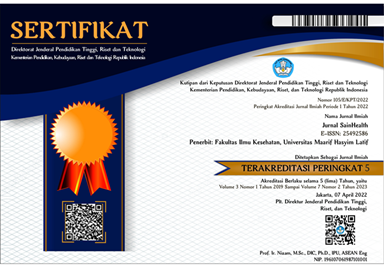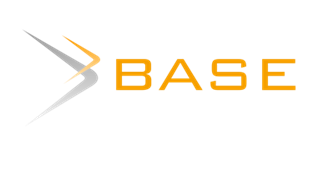MIKROORGANISME PENDEGRADASI TPH (TOTAL PETROLEUM HYDROCARBON) SEBAGAI AGEN BIOREMEDIASI TANAH TERCEMAR MINYAK BUMI (Review Article)
DOI:
https://doi.org/10.51804/jsh.v2i2.287.35-42Keywords:
TPH, Bioremediation, SoilAbstract
Exploitation and exploration activities will produce sewage sludge and crude oil spills that cause pollution to the environment and upgrading to the environment, biology and soil chemistry. Monitoring of oil pollution conditions on the soil can be done by detection of all hydrocarbon components, or what is called the total petroleum hydrocarbon (TPH). According to its components, this total petroleum hydrocarbon (TPH) can be classified into 3 points, aliphatic, alicyclic, and aromatic. One of the biological efforts that can be used to overcome petroleum pollution is by using bioremediation technology. There are several methods in bioremediation, one of which is the biostimulation method, where the growth of the original hydrocarbon decomposers is stimulated by adding nutrients, oxygen, pH optimization and temperature. Hydrocarbonoclastic microorganisms have characteristic not possessed by other microorganisms, namely their ability to excrete hydroxylase enzymes, which are hydrocarbon oxidizing enzymes, so that these bacteria can degrade petroleum hydrocarbons. Biodegradation can be formed if there is a structural transformation so that cahnges in molecular integrity occur. This process is a series of enzymatic or biochemical reaction that require ideal environmental conditions with the growth and proliferation of microorganisms. Something that need to be known before remediation are pollutants (organic or inorganic), degraded/ not, dangerous/ not, how many pollutants pollute the soil, the ratio of carbon (C), Nitrogen (N), and phophorus (P), soil type, soil conditions (wet dry), and how long pollutants have been deposited in these locations
References
Alami, Nur Hidayah. 2010. Efektivitas biosurfaktan Pseudomonas putidaT1(8) dalam bioremediasi tanah tercemar minyak mentah. Tesis, Universitas Airlangga, Surabaya
Abdusssalam dan Omale. 2009.Comparation of biostimulation and bio augmentation techniques for the remediation of used motor oil contaminated soil. Braz. Arch. Biol. Technol. Vol.52 no.3
Aliyata, Barokah, La Ode Sumarlin, Ahmad Saepul Mujab. 2011. Penggunaan biokompos dalam bioremediasi lahan tercemar limbah minyak bumi. Valensi. vol.2 no.3
Arafa, A.M., 2003. Biodegradation of some aromatic hydrocarbons (BTEX) by a bacterial consortium isolated from polluted sait in Saudi Arabia. Pakistan Journal of Biological science 17: 1482–1486.
Chatterjee, Sandipan et al. 2008.Bioremediation: a tool for cleaning polluted environments (Review Paper).Journal of Applied Biosciences. Vol. 11: 594 - 601.
Cunningham dan Philp. 2000. Comparation of bioaugmentation and biostimulation in ex situ treatment of diesel contaminated soil. Land Contamination and Reclamation. 8 (4)
Das, Nilanjama dan Preethy Chandran. 2011. Microbial degradation of petroleum hydrokarbon contaminant: An Overview. Biotechnology Research International. V.2011 (Article id.941810).
Ekpo, M.A. dan U.S. Udofia. Rate of biodegradation of crude oil by micoorganims isolated from oil sludge environment. African Journal Of Biotechnology. Vol.7 (24), pp 4495-4499.
Ibiene et al., 2011. Bioremediation of hydrocarbon contaminated soil in the Niger delta using spent mushroom compost and other organic waste. Nigerian Journal Of Agriculture, Food And Environment. 7(3)
Mariano A.P., Ana Paula, Dejanira de Franceschi, and Daniel Marcos Bonotto, 2007. Laboratory study on the bioremediation of diesek oil contaminated soil from petrol station. Brazillian Jaournal Of Microbiology. 38: 346-353.
Munawar dan Tini Surtiningsih. 2005. Bioremediasi Tumpahan Minyak Mentah Dengan Metode Biostimulasi Di Lingkungan Pantai Surabaya Timur. JurnalHayati.105-132.
Ni’matuzahroh, fatimah, Rini Purbowati, Ahmad thontowi, Agus supriyanto, dan M. Afandi. 2009. Exploration of polyaromatic hydrocarbonoclastic microbes from oil polluted soil. Proceeding: Congress and international conference of indonesian society for microbiology.
Nugroho, A. 2003. Bioremidiasi Hidrokarbon Minyak Bumi. Jakarta: Bumi Aksara
Handrianto, P. (2012). Teknologi bioremediasi dalam mengatasi tanah tercemar hidrokarbon. In Prosiding Seminar Nasional Kimia Unesa 2012 (pp. 22-30).
Handrianto, P. (2013). Bioremediasi tanah tercemar minyak bumi di lokasi pertambangan tradisional Bojonegoro dengan metode stimulasi menggunakan kotoran sapi (Doctoral Dissertation, Universitas Airlangga).
Sudarmaji, J. Mukono, dan Corie I.P. 2006. Toksikologi logam berat B3 dan dampaknya terhadap kesehatan. FKM. Universitas Airlangga.
Vidali, M., 2001. Bioremediation. An over view. Pure Appl.Chem. 73(7): 1163-1172.
Downloads
Published
Issue
Section
License
Jurnal SainHealth is licensed under Creative Commons Attribution 4.0 International License.
Under the following terms:
Attribution — You must give appropriate credit, provide a link to the license, and indicate if changes were made. You may do so in any reasonable manner, but not in any way that suggests the licensor endorses you or your use.
No additional restrictions — You may not apply legal terms or technological measures that legally restrict others from doing anything the license permits.















